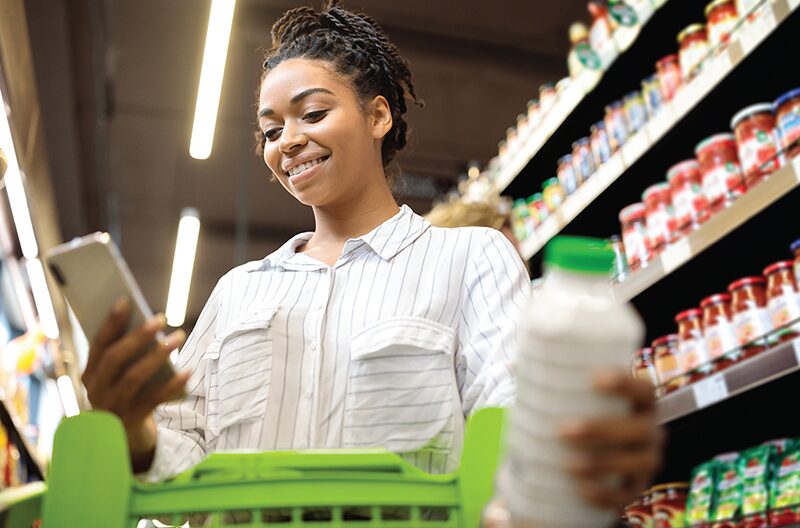As grocery shopping enters a new era of digital transformation, FMI – The Food Industry Association and NielsenIQ have released a new report, “Digital Engagement Transforms Grocery Shopping,” which premiered at FMI’s Midwinter Executive Conference.
The report found that more than 90 percent of shoppers participate in both online and in-store shopping.
“Consumers are seamlessly blending in-store and online experiences to meet their needs,” said Mark Baum, chief collaboration officer and SVP of industry relations for FMI.
“Our research underscores the urgency for food retailers and manufacturers to adapt to this omnichannel reality and leverage digital technologies to enhance convenience, personalization and trust. Trading partners need to meet consumers where and how they want to be met.”
In 2017, FMI and NIQ predicted that by 2025, digitally engaged grocery shopper spending would reach $100 billion, or 20 percent market penetration.
This year’s report reveals that those projections were met and exceeded, with FMI/NIQ projecting total U.S. online sales for grocery items to reach $388 billion, or nearly 25 percent market penetration, by 2027.
It underscores the growing influence of digital tools – from e-commerce platforms and retailer apps to social media and artificial intelligence-powered personalization – on the modern-day grocery shopping experience and illustrates how the COVID-19 pandemic contributed to the rapid adoption of omnichannel shopping.
“Digital engagement is no longer a complementary strategy, it’s essential to growth,” said Kim Cox, managing director, omnicommerce at NielsenIQ. “With online food sales projected to reach $388 billion by 2027, retailers and manufacturers must prioritize e-commerce and social commerce strategies to meet the expectations of digitally connected consumers.”
[RELATED: FMI Hails 2025 Executive Leadership Award Recipients]
Other key findings of the report include:
- Online sales growth: Growth exceeds that of in-store for food and nonfood categories, while in-store leads in total share;
- Youth purchasing power: Gen Z begins its shopping journeys online and is heavily influenced by social media. Meanwhile, Millennials index highest for online purchasing;
- Social media e-commerce: Fifty-five percent of respondents now make direct purchases from social media or live-stream platforms for grocery and household items;
- Technology prioritization: Ninety-two percent of retailers are using technology, including AI, to personalize or customize shopping or marketing experiences, both online and in-store; and
- Curbside pickup: This option is used more often by shoppers, at 31 percent of respondents, overtaking same-day home delivery, which has dropped to 29 percent.
The findings highlight both the challenges and opportunities facing food retailers and manufacturers to prioritize their connected commerce strategies. Embracing channel fluidity, which allows shoppers to move between e-commerce, in-store and social channels, is essential for future success.
The “Digital Engagement Transforms Grocery Shopping” study is part of a strategic alliance and multi-year initiative with FMI and NIQ to uncover comprehensive insights on current and future digital shopping behaviors within the food retail marketplace.

